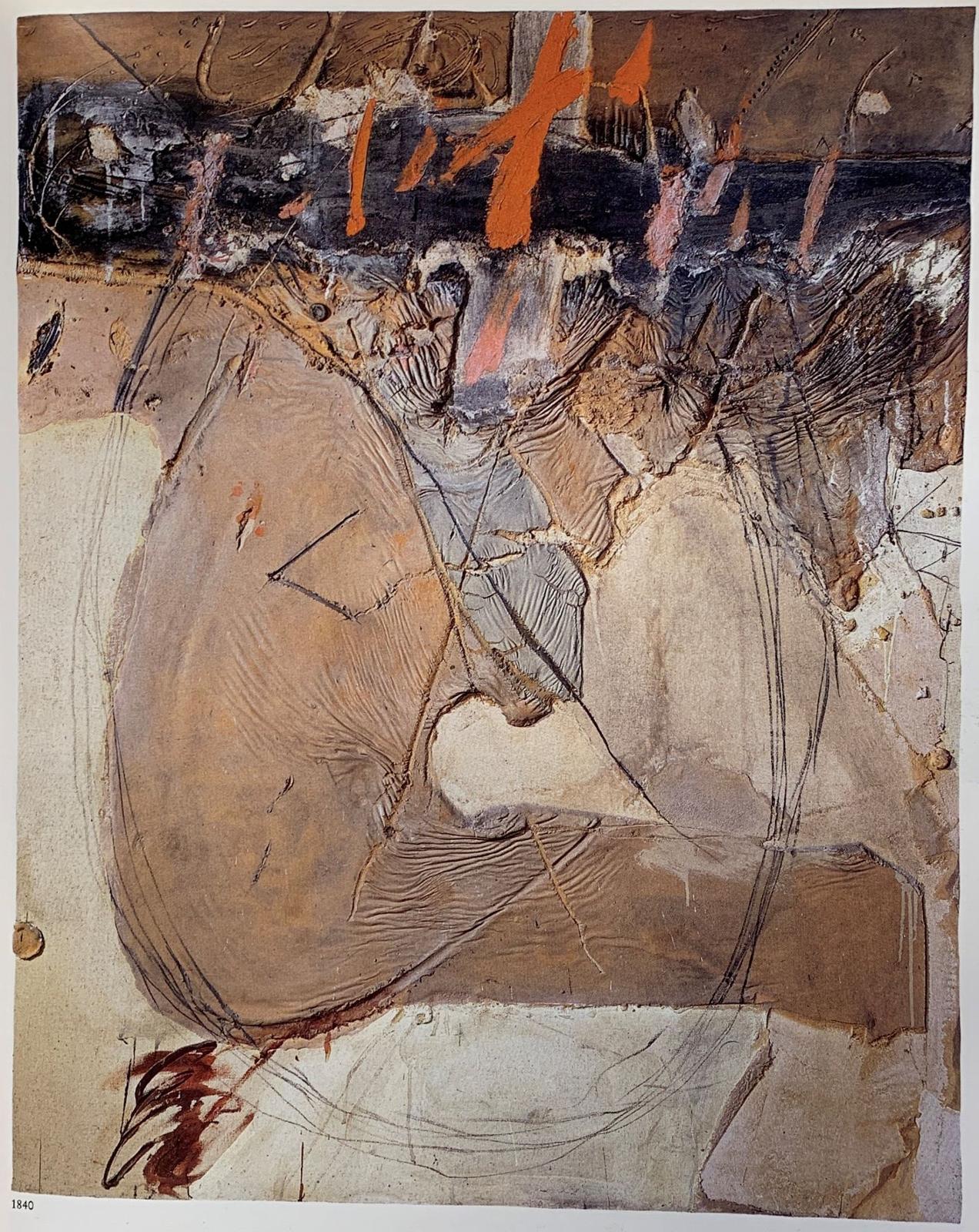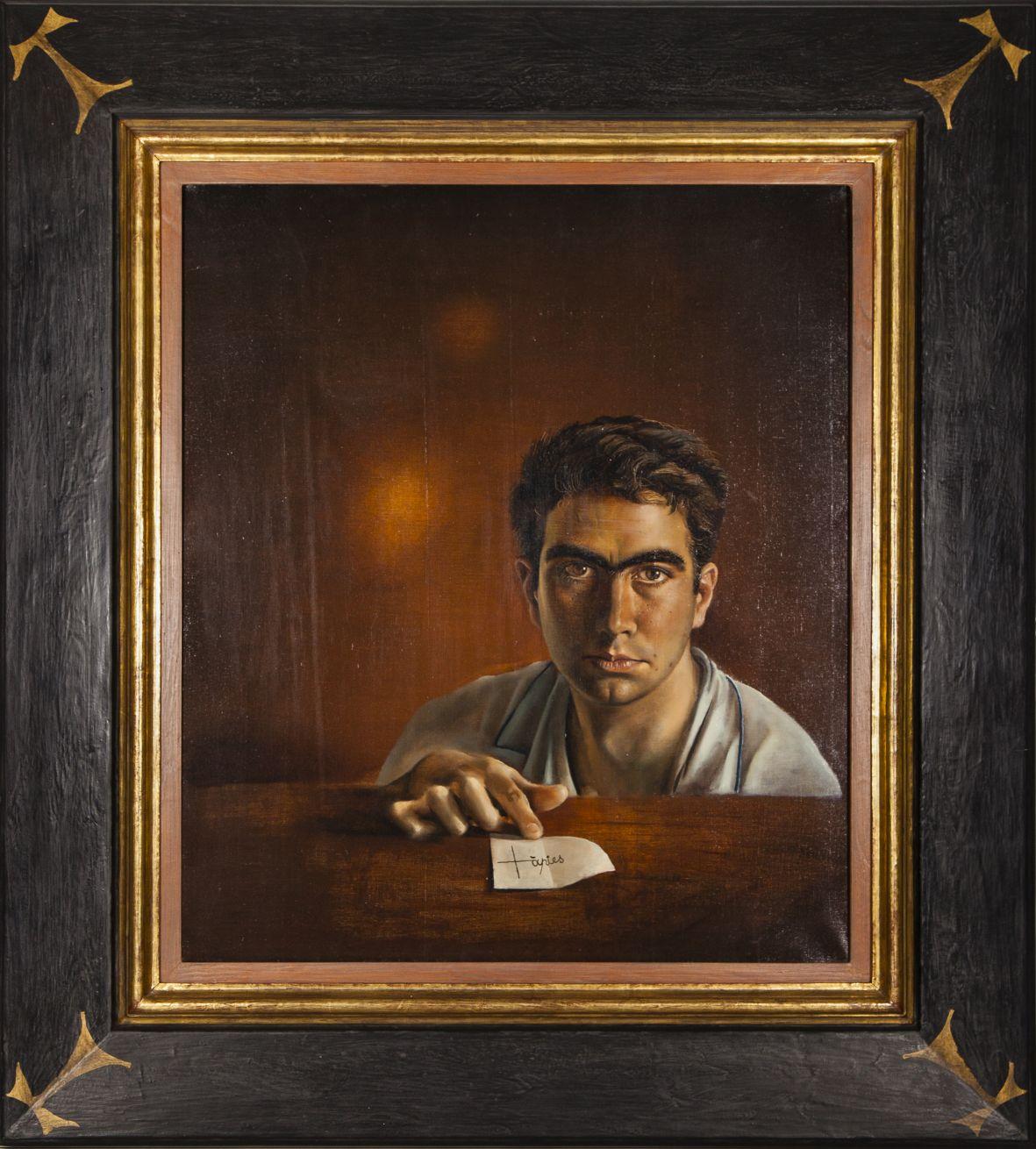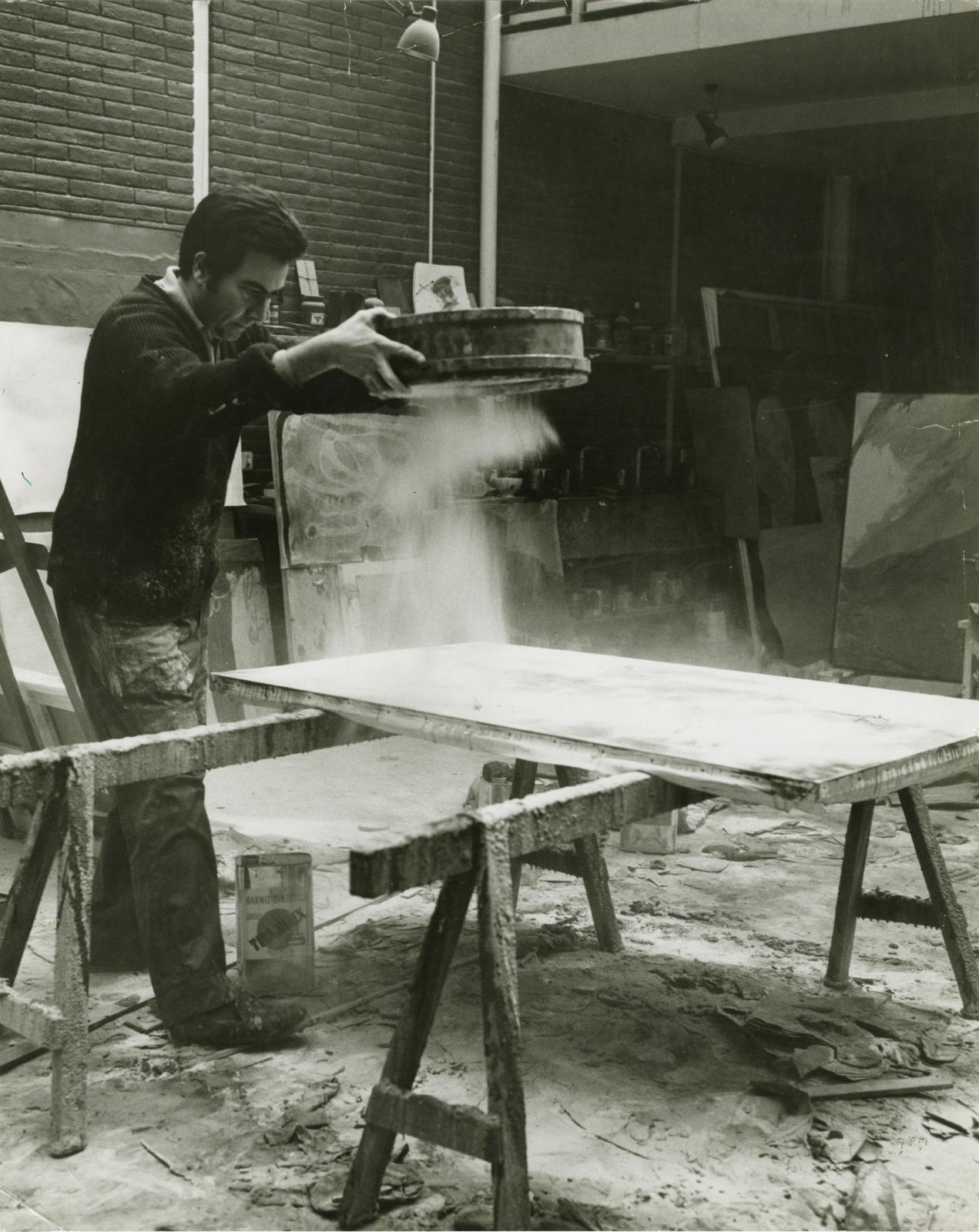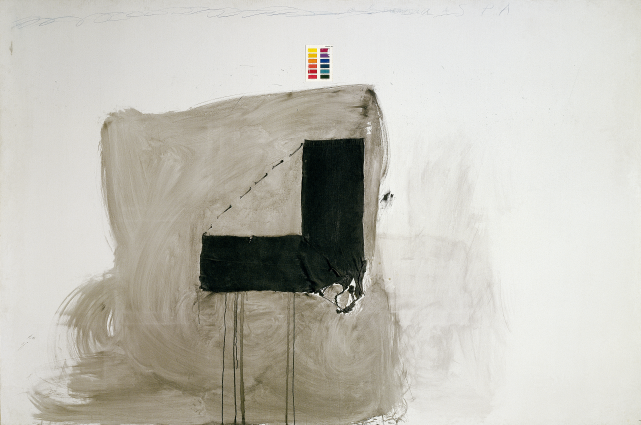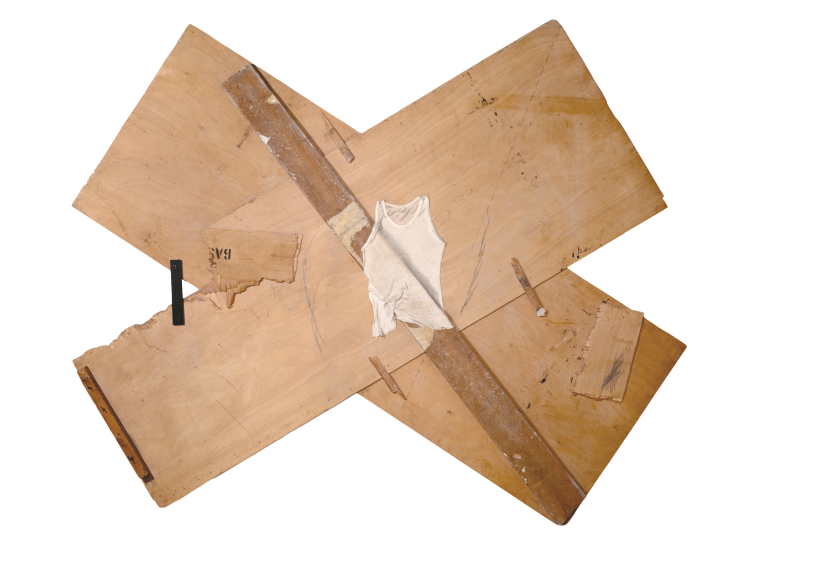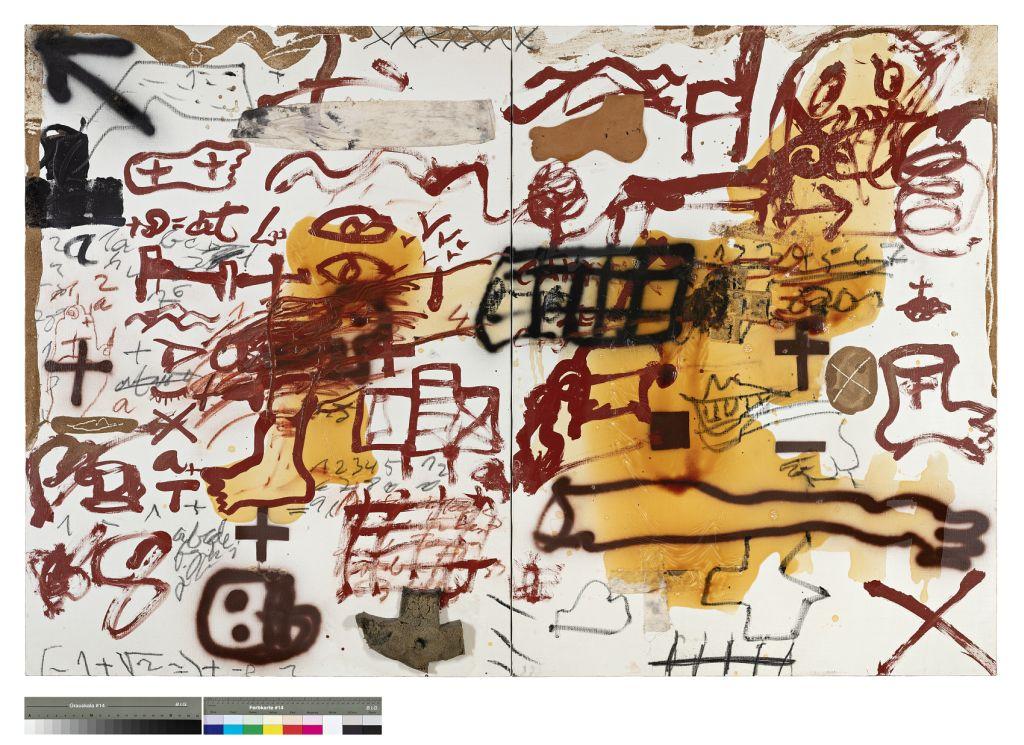Antoni Tàpies.The Practice of Art is the first major exhibition in Belgium of Antoni Tàpies (Barcelona, December 13, 1923 – February 6, 2012), and shows a complete vision of his work, in the year of the centenary of his birth, with a selection of 122 pieces being exhibited together for the first time. After his self-portraits and works influenced by Surrealism and Dadaism, the exhibition at Bozar-Centre for Fine Arts displays Tàpies' first “matierist” paintings, produced in the 1950s, which incorporate raw materials, marks and signs.
The exhibition begins with Tàpies' early drawings and self-portraits and continues with the “matter paintings” of the 1950s and the objects and assemblages of the 1960s and 1970s. This was followed by the varnish paintings of the 1980s, which he had begun a few years earlier during the early days of democracy in Spain. The exhibition also presents works from the 1990s, during which Tàpies continued his formal and material experimentation that had always been at the heart of his practice.
Often associated with “matierism” or “informal art”, Tàpies' artistic practice was based on gesture and the use of modest and unconventional materials on canvas. He used sand, string, dust, hair or straw, suggesting that beauty can be found in the small, unexpected and everyday.
But beyond the artist’s experimentation with form and material, which continued throughout his career, the visitor can also penetrate the mystical, philosophical and political dimensions of the Tàpies universe. Therefore, his work is not only a study of matter but also explores the perception of reality and human nature. At the same time, Tàpies' art is intimately linked to the history and politics of his country, which was affected by the Spanish Civil War, the Second World War and Franco's regime.
The centenary of Tàpies invites us to take stock of an oeuvre that resists decryption. The intellectual halo that surrounds it is permeated with discourses on the history of science, the mysticism of Eastern religions and political philosophy. A self-taught artist of the post-war period, Tàpies reflected on the human condition, his own historical context and artistic practice, in particular the limits and contradictions of painting. His prolific oeuvre is scattered throughout the world.
Manuel Borja-Villel is the curator of this first Tàpies retrospective in Belgium in almost 40 years. The exhibition is organized by the Museo Nacional Centro de Arte Reina Sofía in collaboration with Bozar-Centre for Fine Arts and the Antoni Tàpies Foundation, and is supported by the Ramon Llull Institute. It coincides with the Spanish Presidency of the Council of the European Union.
This exhibition, which opens the Tàpies Year ("Any Tàpies"), has its European premiere at Bozar and will then travel to Madrid, at the Reina Sofía Museum, and to Barcelona, at the Fundació Antoni Tàpies. The exhibition is accompanied by a book published by Bozar Books. The book includes texts by Antoni Tàpies and Manuel Borja-Villel.

